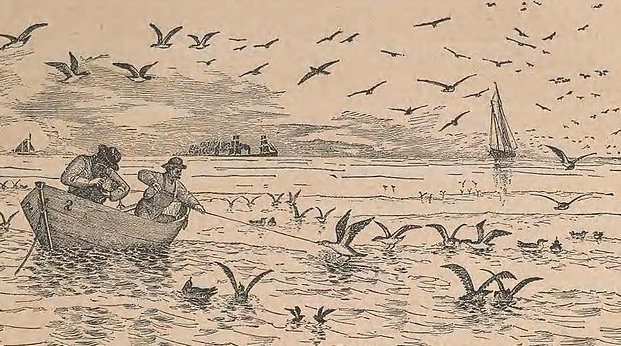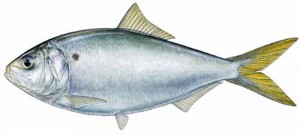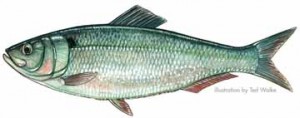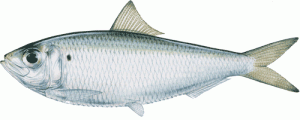Forage fish or baitfish sustain our game fish and prey birds. Without healthy stocks of these forage fish, we’d encounter diminished stocks of all game fish, smaller sized fish and extinction threatened stripers, bluefish, snook, redfish, mackerels, tunas, billfish and dozens more species. And it would be a greedy few who’d be happy to fish us to The Empty Ocean. The April 2012 article below by Henry Fountain, science editor for the New York Times, points out that some folks are paying close attention; thankfully.
[dropcap]A[/dropcap]n international group of marine scientists is calling for cuts in commercial fishing for sardines, herring and other so-called forage fish whose use as food for fish farms is soaring. The catch should be cut in half for some fisheries, the scientists say, to protect populations of both the fish and the natural predators that depend on them. “The message is, if you cut back on harvesting of forage fish, there will be benefits,” said Ellen K. Pikitch, director of the Institute for Ocean Conservation Science at Stony Brook University and chairwoman of the task force that produced a report on the issue that was released Sunday.
The report, “Little Fish, Big Impact,” financed by the Lenfest Foundation through the Pew Charitable Trusts, details how fishing has increased for these fish, which now account for 37 percent, by weight, of all fish harvested worldwide, up from about 8 percent half a century ago. The consumer market for forage fish is relatively small; most of the fish are ground and processed for use as animal feed and nutritional supplements and, increasingly, as feed for the aquaculture industry, which now produces about half of all the fish and shellfish that people eat.
Forage fish are an important link in the food chain, eating plankton and being consumed, in turn, by large fish like tuna and cod, as well as by seabirds and dolphins and other marine mammals. The task force estimated that as a source of food in the wild for larger commercially valuable fish, forage fish were worth more than $11 billion, or twice as much as their worth when processed for aquaculture and other uses.
“Sometimes the value of leaving fish in the water can be greater than taking it out,” Ms. Pikitch said. The report cites several cases in which overfishing of forage fish has led to the collapse of populations of larger fish or other predators, and suggests that such cases could increase unless catches are reduced.
On the East Coast, the fishery for menhaden, a forage fish, is the largest in the region, and about 80 percent of the catch is processed into meal and other products. The abundance of menhaden has declined over the last quarter-century, said Edward D. Houde, a professor at the University of Maryland Center for Environmental Science and a member of the task force, as the fish’s reproductive rate has fallen. Yet fishing has continued at a high rate.Bob Beal, an official with the Atlantic States Marine Fisheries Commission, a regional group that coordinates management plans for the menhaden and other fisheries, said that in 2010, the menhaden population was estimated to have been reduced to 8 percent of its maximum potential. As a result, Mr. Beal said, the commission has recommended reducing the allowable catch so that the population roughly doubles, to a threshold of 15 percent of the maximum level, with an eventual target of 30 percent. The reductions would take place next spring, after a period to allow for public comments on the proposal.
But Mr. Houde said that in the case of menhaden, the task force would recommend a threshold of 30 percent and a target of perhaps 40 percent, which would mean even greater catch reductions. “Our recommendation is to be very precautionary,” he said, “mostly to protect other things in the ecosystem, but also to protect the fish itself.”
Mr. Beal said while the commission’s new plan for the menhaden fishery is not as conservative as some scientists have sought, “it’s a pretty big departure from where it’s been managed.” He said that the commission had to weigh the needs of the fishing industry as well.
“Ultimately, the hope of the managers is to rebuild the stock,” he said, “so the industry can get what they want out of it, and prey animals can get what they want out of it, too.”
Sources: New York Times, NOAA, International Game Fish Association, Wall Street Journal, Pew Trust, Ocean Conservation Science (Stonybrook), University of Maryland
[information]
Resources
The Empty Ocean
Callum Roberts
The Unnatural History of the Sea
[/information]





